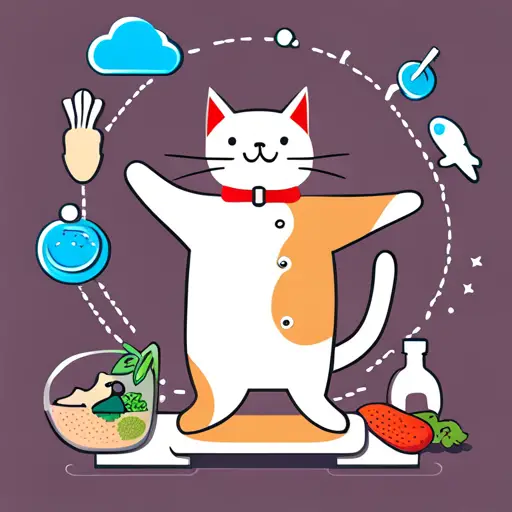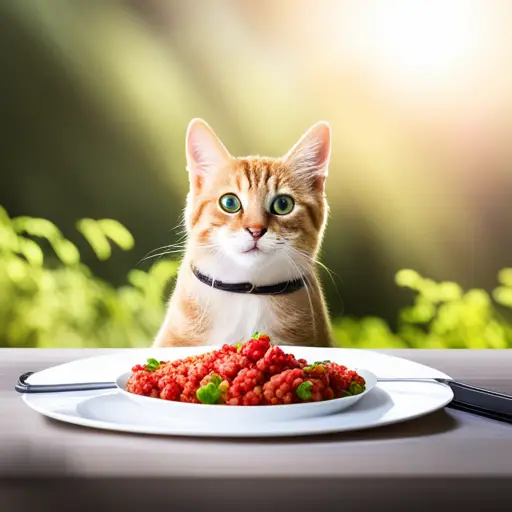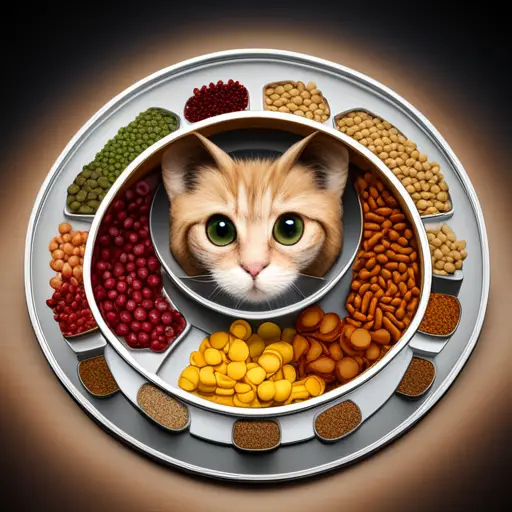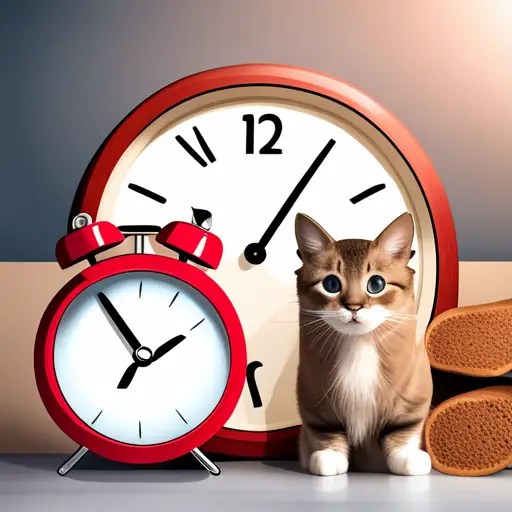Congratulations! You’ve finally decided to switch your cat’s food!
It’s a big step, and one that can reap huge benefits for your furry friend’s health and well-being. However, it’s important to understand that cats are creatures of habit, and any sudden changes to their diet can upset their stomachs and lead to digestive issues.
But fear not! With a little bit of planning and some helpful tips, you can switch your cat’s food without any fuss or upset.
In this article, we’ll guide you through the process of switching your cat’s food, step-by-step. We’ll cover everything from assessing your cat’s nutritional needs, to choosing a high-quality cat food, to addressing any digestive issues that may arise.
By the end of this article, you’ll be equipped with all the knowledge you need to ensure a smooth and successful transition to your cat’s new diet. So let’s get started!
Key Takeaways
– Switching a cat’s food should be done gradually and with care to avoid upsetting their stomach.
– It is important to assess a cat’s nutritional needs and consider their food preferences before making any changes.
– A well-balanced diet with quality ingredients and protein sources should be chosen, avoiding fillers and harmful additives.
– Monitoring a cat’s behavior and appetite during the transition period is important, and any digestive issues should be addressed before making the switch.
Assess Your Cat’s Nutritional Needs

You’ll want to make sure you’re giving your furry friend the best possible nutrition, so assess their nutritional needs before making any sudden food changes. This means taking into account their age, weight, activity level, and any health concerns they may have.
Consulting with your veterinarian can also be helpful in determining what type of food is best for your cat’s specific needs. Once you have an idea of what your cat needs, research different brands and types of cat food that meet those requirements.
Look for high-quality ingredients and avoid fillers like corn, wheat, and soy. Consider whether your cat prefers dry or wet food, and if they have any allergies or sensitivities.
With this information, you’ll be able to make an informed decision about what food to switch to and how to do it without upsetting your cat’s stomach.
Introduce New Food Gradually

First, start by slowly incorporating the new grub into their regular meal. A gradual introduction to the new food can help your cat’s digestive system adjust to the change.
Begin by mixing a small amount of the new food with their current food and gradually increase the proportion of the new food over a period of several days. This will give your cat’s taste buds time to adjust to the new flavor and texture, and their digestive system time to adapt to the new ingredients.
It’s important to keep in mind your cat’s food preferences when introducing new food. Some cats are picky eaters, and it may take longer for them to adjust to a new brand or flavor.
Be patient and observe your cat’s behavior and appetite during the transition period. If your cat seems reluctant to eat the new food, try mixing in some of their favorite treats or wet food to entice them.
Remember, switching your cat’s food takes time and patience, but it’s worth it for their overall health and wellbeing.
Choose a High-Quality Cat Food

When choosing a high-quality cat food, it’s important to look for a balanced diet that meets your cat’s nutritional needs.
You should also consider whether wet or dry food is best for your cat’s lifestyle and preferences.
And, be sure to avoid cheap fillers and by-products that can negatively impact your cat’s health.
Look for a Balanced Diet
A well-balanced diet is key to ensuring your cat’s digestive system stays happy and healthy when transitioning to new food. When looking for a new cat food, make sure it has a proper balance of protein, fat, and carbohydrates.
Protein is particularly important for cats, as it helps maintain their muscle mass and supports their overall health. Look for high-quality sources of protein like chicken, turkey, or fish. In addition to protein, it’s important to pay attention to portion sizes.
Feeding your cat too much or too little can cause digestive issues and lead to weight problems. Follow the recommended serving sizes on the package and adjust as necessary based on your cat’s individual needs. By choosing a well-balanced diet and proper portion sizes, you can help ensure a smooth and successful transition to new cat food.
Consider Wet vs. Dry Food
To make things more interesting for your cat, you might want to consider whether wet or dry food would be best for their needs. Both options have their own set of pros and cons.
Wet food can help keep your cat hydrated and may be easier for some cats to digest. It also comes in a variety of flavors and textures that can add some excitement to your cat’s mealtime. However, wet food can be more expensive and may spoil faster once opened.
On the other hand, dry food is generally more affordable and has a longer shelf life. It can also help keep your cat’s teeth clean by reducing tartar buildup. However, it can be less palatable for some cats and may not provide as much moisture as wet food.
Ultimately, it’s up to you to decide which type of food is best for your cat’s individual needs. If you do decide to switch from one type of food to the other, make sure to do so gradually to avoid upsetting your cat’s stomach. Follow these step-by-step instructions to help make the transition as smooth as possible:
Avoid Cheap Fillers and By-Products
Now that you’ve decided on whether to switch your cat’s food to wet or dry, it’s important to make sure the food you choose is of high quality. This means avoiding cheap fillers and by-products that can harm your cat’s health. Instead, opt for a cat food that has quality ingredients and protein sources.
When it comes to cat food, not all are created equal. Reading cat food labels is essential to ensure you’re not giving your furry friend a meal filled with harmful additives. Here are four things to look out for when choosing a cat food:
1. Avoid fillers like corn, wheat, and soy. These do not provide your cat with the nutrients they need and can cause digestive issues.
2. Stay away from by-products. These are low-quality protein sources and can even include parts of the animal that are not fit for human consumption.
3. Look for ingredients like chicken, turkey, or fish. These are high-quality protein sources that will keep your cat healthy and happy.
4. Check for harmful additives like artificial colors, flavors, and preservatives. These can cause health issues and even shorten your cat’s lifespan.
By following these guidelines and choosing a cat food with quality ingredients and protein sources, you can ensure that your cat’s diet is healthy and balanced.
Address Any Digestive Issues

If your cat has been experiencing stomach problems, you’ll want to take it easy when introducing their new food. It’s important to address any digestive issues before making the switch, as sudden changes can make things worse. Consider adding probiotic supplements to their diet to help improve their gut health.
When transitioning to a new food, make sure to do so gradually. This means mixing a small amount of the new food with their current food and gradually increasing the amount of the new food over time. This helps your cat’s digestive system adjust to the new food without causing any upset.
Remember to monitor your cat’s reaction to the new food and make adjustments as needed. With a little patience and care, you can successfully switch your cat’s food without upsetting their stomach.
Maintain a Consistent Feeding Schedule

Sticking to a consistent feeding schedule is crucial for maintaining your feline friend’s overall health and wellbeing. This means keeping their feed frequency and timing consistency the same each day.
If you’re planning to switch your cat’s food, it’s important to start transitioning their diet slowly. You can begin by mixing a small amount of the new food with their current one, and gradually increasing the amount over the course of a week or two.
It’s also important to stick to a consistent feeding schedule even after the food transition is complete. This means feeding your cat at the same times each day, whether it’s once, twice, or multiple times a day.
By keeping their feeding schedule consistent, you’ll help maintain their digestive health and prevent any stomach upsets that may occur from sudden changes. Remember, your cat relies on you to provide them with a healthy and stable diet, so be sure to take the time to make any changes gradually and with care.
Conclusion
Congratulations on taking the step to switch your cat’s food without upsetting their stomach! By following the steps outlined in this article, you can ensure a smooth transition for your furry friend.
Remember to assess your cat’s nutritional needs, introduce the new food gradually, choose a high-quality cat food, address any digestive issues, and maintain a consistent feeding schedule. By doing so, you can help your cat adjust to their new diet and avoid any stomach upset.
With a little patience and care, you can provide your cat with the best possible nutrition and keep them healthy and happy for years to come. So go ahead and make the switch with confidence, knowing that you’re taking the best possible care of your beloved feline companion.
